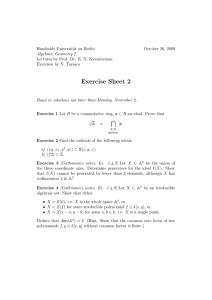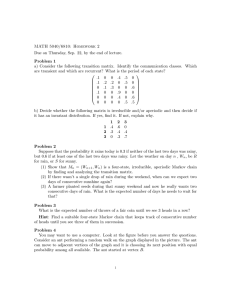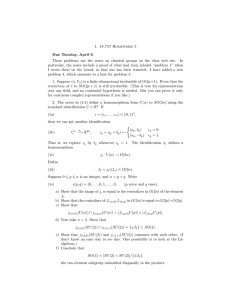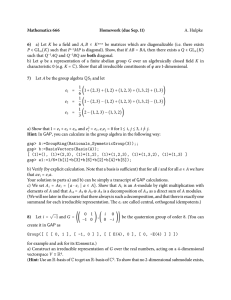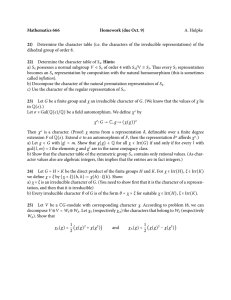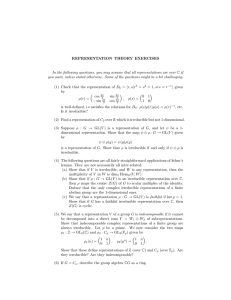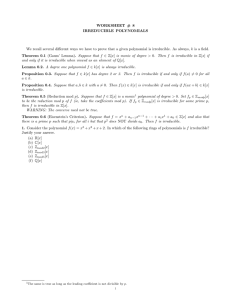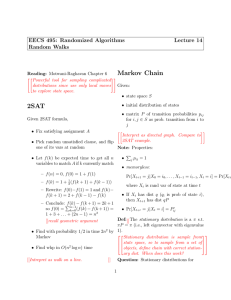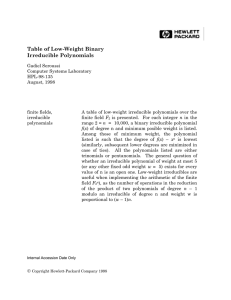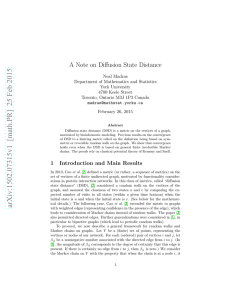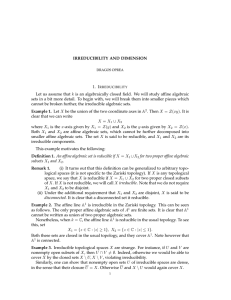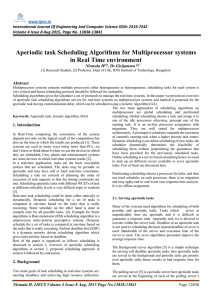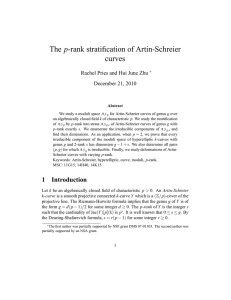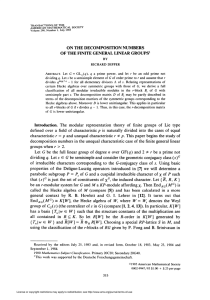Solution to Homework 3.
advertisement
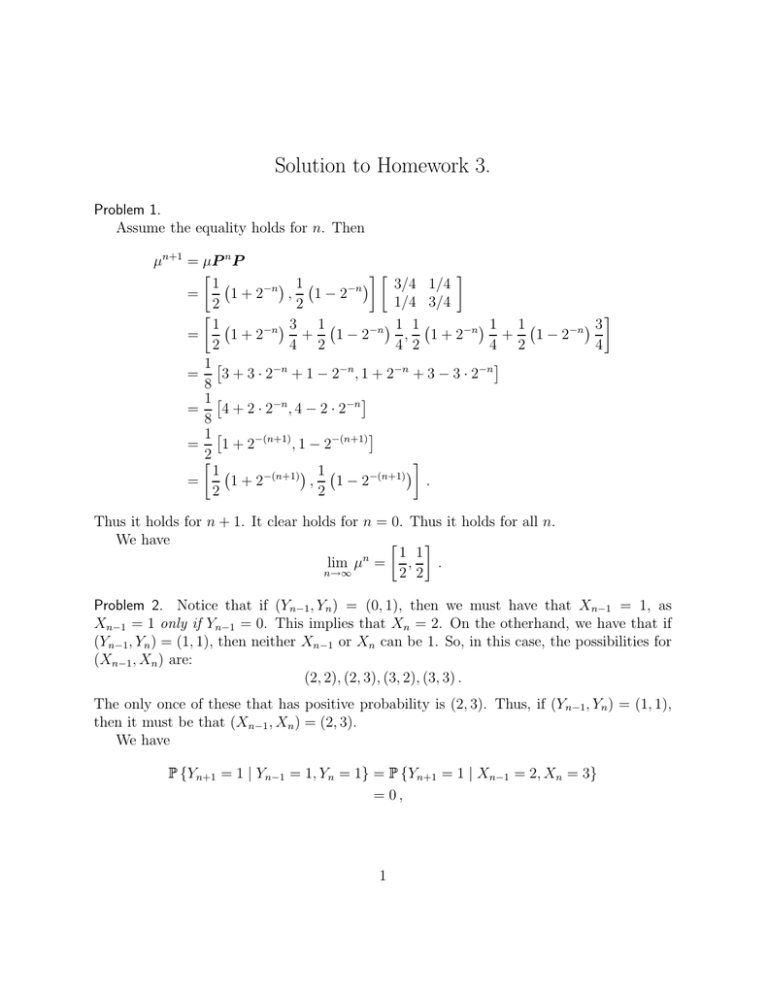
Solution to Homework 3.
Problem 1.
Assume the equality holds for n. Then
µn+1 = µP n P
1
1
3/4 1/4
−n
−n
1+2
, 1−2
=
1/4 3/4
2
2
1
1
1
−n 3
−n 1 1
−n 1
−n 3
=
1+2
1−2
1−2
+
, 1+2
+
2
4 2
4 2
4 2
4
1
=
3 + 3 · 2−n + 1 − 2−n , 1 + 2−n + 3 − 3 · 2−n
8
1
4 + 2 · 2−n , 4 − 2 · 2−n
=
8
1
=
1 + 2−(n+1) , 1 − 2−(n+1)
2
1
1
−(n+1)
−(n+1)
1+2
, 1−2
.
=
2
2
Thus it holds for n + 1. It clear holds for n = 0. Thus it holds for all n.
We have
1 1
n
lim µ = ,
.
n→∞
2 2
Problem 2. Notice that if (Yn−1, Yn ) = (0, 1), then we must have that Xn−1 = 1, as
Xn−1 = 1 only if Yn−1 = 0. This implies that Xn = 2. On the otherhand, we have that if
(Yn−1, Yn ) = (1, 1), then neither Xn−1 or Xn can be 1. So, in this case, the possibilities for
(Xn−1 , Xn ) are:
(2, 2), (2, 3), (3, 2), (3, 3) .
The only once of these that has positive probability is (2, 3). Thus, if (Yn−1, Yn ) = (1, 1),
then it must be that (Xn−1 , Xn ) = (2, 3).
We have
{Yn+1 = 1 | Yn−1 = 1, Yn = 1} = {Yn+1 = 1 | Xn−1 = 2, Xn = 3}
= 0,
1
because given that Xn = 3, we have with probability one that Xn+1 = 1 and hence Yn+1 = 0.
But
{Yn+1 = 1 | Yn−1 = 0, Yn = 1} = {Yn+1 = 1 | Xn−1 = 1, Xn = 2}
= 1,
since Xn+1 must be 3 when Xn = 2.
Thus it cannot be that
{Yn+1 = 1 | Y0 = i0 , . . . , Yn = in } =
{Yn+1 = 1 | Yn = in } ,
as this would imply
0=
{Yn+1 = 1 | Yn−1 = 1, Yn = 1} =
{Yn+1 = 1 | Yn = 1}
= {Yn+1 = 1 | Yn−1 = 0, Yn = 1} = 1
Problem 3.
Just check that
{X2n+2 = j | X2 n = i} = (P 2 )i,j .
Problem 4.
r
Take any state j. Since the chain is irreducible, there exist r and s so that Pi,j
> 0 and
s
Pj,i
> 0. We know that
r+s
s
r
Pj,j
≥ Pj,i
Pi,j
> 0.
Also, we know that
r+s+1
s
r
Pj,i
≥ Pj,i
Pi,i Pi,j
> 0.
Thus the set of integers
n
A = {n : Pj,j
> 0}
contains r + s and r + s + 1. But the g.c.d. of r + s and r + s + 1 is 1, and so the g.c.d. of A
is 1. Thus state j has period 1. Since this holds for any j, the Markov chain is aperiodic.
Problem 5. The king is irreducible, as it can reach any square. It is possible to return to
any position in both 2 moves and 3 moves, so it is aperiodic.
The bishop is restricted to its starting color, so it is not irreducible. It is possible to
return to its position in both 2 and 3 moves, so it is aperiodic.
The knight is irreducible, but has period two. TO see that it has period two, notice
that is always moves from a white position to a black position, and from a black position
to a white position. Thus it can only return to its starting place after an even number of
moves.
2


